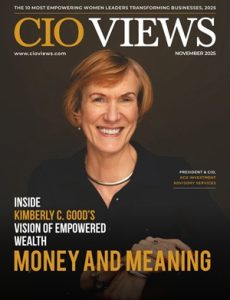There is an AWP skin in Counter-Strike that needs no introduction to anyone who has spent time around the game: the Dragon Lore.
Now narrow that image further. A Dragon Lore with a number one float value, sitting in the inventory of a creator whose channel began as a university side project and grew into a full scale business. That is where you find Edd Stanton, the face of Sparkles Productions and the skin comparison project SkinSearch, and one of the more revealing case studies in how digital items have slipped from novelty into asset class.
Once a cosmetic can be worth as much as a car or a year at university, it stops being just a bit of dressing on a virtual gun. It behaves like capital. And when capital moves, questions of responsibility follow.
This is not really a story about one weapon skin. It is a story about what Stanton’s Dragon Lore, his audience, and his companies say about a market that increasingly resembles high risk finance, while still presenting itself as entertainment.
When pixels start to price like property
On paper, nothing about a Dragon Lore changes the way Counter-Strike plays. It does not alter damage, recoil or accuracy. In theory, it is decoration.
The market does not treat it that way.
Scarcity is coded in from the start. Some collections disappear, some tournament stickers are never printed again, and certain patterns and float values become almost mythological. Provenance starts to matter. Old capsules, untouched finishes and the cleanest floats carry a kind of provenance that is closer to vintage watches than to game textures.
Price discovery no longer happens inside the game client. It plays out across third party marketplaces, Telegram groups, private Discord servers and YouTube channels. A number one float Dragon Lore is at once a status symbol, a speculative instrument and a piece of Counter-Strike history.
When Stanton clicks into that item on stream, he is not only flexing a rare piece of digital art. He is moving inside a market where a single mention can influence what people buy, where they trade and how much risk they are willing to take on. The question then becomes less about whether it looks cool, and more about what responsibility comes with putting it in front of a huge and often young audience.
Influence in a space with almost no rules
The skin economy lives in an awkward gap between games and finance.
It borrows mechanics from gambling through cases and random drops. It involves real value, sometimes life changing sums, without the protections that surround traditional financial products. It is populated heavily by teenagers and young adults who are still learning basic financial literacy.
In that environment, creators sit at the junction of information and aspiration. They decide which platforms feel trustworthy, which trades seem normal and which risks are framed as harmless fun. Stanton is not only an entertainer who opens cases and inspects items. Through repetition and example, he acts as an informal guide to how this world works.
Every time he scrolls through his inventory on stream, several things happen at once. Attention concentrates on whatever he chooses to linger on. Legitimacy rubs off on the sites and services he is seen using. Viewers absorb habits, from how he talks about value to how casually he treats five and six figure items.
None of this looks like a formal recommendation. It does not need to. The power lies in the soft pressure of familiarity. Over time, it shapes what seems normal.
That is why ethics in this space do not begin with big scandals. They begin with small, everyday choices about what to show, how to frame it and which businesses to stand beside.
SkinSearch and the idea of duty of care
Stanton talks openly about wanting to steer less experienced players toward safer sites and better prices. SkinSearch is built around that promise. The project functions as a kind of index, pointing users toward platforms that clear a basic bar on price and legitimacy
The need for that role is revealing. For every established marketplace, there are lookalike sites that exist only to harvest Steam logins, bots that never pay out and platforms that treat security as an afterthought. Affiliate links and referral deals sit on top of this mess in ways that are not always obvious to users.
In regulated finance, anyone guiding clients toward particular products is expected to carry out formal checks and to disclose their incentives. In the world of skins, there is no such framework. The underlying dynamic is not so different. A creator has information. The audience does not. The creator suggests where to transact. Real money moves.
That is advice in everything but name. And advice carries a duty of care, even if the law has not yet caught up to this corner of the internet.
Stanton’s answer has been to lean heavily on transparency. He breaks down how specific promotions work, talks about how he is paid and stresses that his goal is to keep people away from obvious bad actors. It is not a complete solution, but it is closer to an ethical starting point than the shrug of many of his peers.
What doing the homework really looks like
It is easy to tell creators that they should do their homework before promoting a site or a product. It is harder to spell out what that means in practice.
At a minimum, that homework looks a lot more like basic due diligence than like glancing at a banner offer. A creator who puts their name behind a platform should be able to answer simple questions. Who runs the site and can they be identified. How are user items and balances stored. What happens when something goes wrong. Is there a public track record, not just a pretty landing page and a generous referral code.
In capital markets, no serious commentator would recommend a broker without knowing those things. The skin economy has reached a size, and level of risk, where the same logic applies.
Transparency around incentives belongs in the same category. Stanton has made a point of telling his audience when segments are sponsored and when links are affiliate links. That sort of clarity should not be viewed as a nice extra. It is the baseline for honest communication in a market where a single video can move volume toward a specific site.
Education as part of the job
There is another dimension that is harder to formalise but just as important. Once a creator realises that many of their viewers are moving real savings through digital cosmetics, education becomes part of the job whether they like it or not.
That does not require turning streams into lectures. It can be as simple as explaining that big wins are rare, that scams are common and that it is entirely possible to enjoy the game without ever touching high value skins. It means showing the missed opportunities and the bad trades as well as the jackpot pulls.
Stanton’s on screen persona, relaxed and openly empathetic, makes that kind of messaging easier to accept. When the person on the other side of the camera seems more interested in the long term health of the community than in extracting as many conversions as possible, viewers tend to listen.
The soft edge of gambling
The most awkward fact about high value skins is that they sit very close to gambling.
The mechanics are familiar. You pay money, you receive a random outcome, and every so often someone hits something spectacular. Content built around those moments can be compelling. It can also blur the line for young viewers who are still learning what risk actually feels like outside of a game.
Creators cannot rewrite how Counter-Strike handles drops and cases. They can however decide how they talk about them. Language that frames the process as pure fun, without any acknowledgment of cost or downside, lands very differently when a fourteen year old is watching with a credit card within reach.
A more responsible tone does not mean scolding viewers. It means putting some distance between entertainment and personal financial decisions. It means being clear that underage viewers should not be risking real money in systems that behave like slot machines with better graphics.
Collector on one side, speculator on the other
One way to understand Stanton’s position is to look at the difference between collecting and speculation.
Collectors buy because an item resonates with them. They care about history, design and personal attachment. They tend to hold onto things, even when prices rise. Speculators buy because they see an angle. They watch charts, hunt for inefficiencies and think in short time frames.
Stanton’s public story leans toward the collector side. He talks about his Pokémon collection, about the early days of Katowice 2014, about the emotional pull of certain skins. For many of his viewers, though, that enthusiasm can look like a proof that there is easy money to be made.
The way a creator talks about value matters. Emphasising meaning over resale price nudges people toward collecting rather than pure speculation. Admitting to mistakes makes it harder to believe in a fantasy of constant gains. Reminding viewers that they are seeing a highlight reel, not a typical experience, is a small but important correction.
A question that will not go away
As more money flows through digital items, a larger question begins to push in from the edges. At what point does influence start to look like something closer to financial responsibility.
In traditional finance, the concept of fiduciary duty is clear. If you advise clients, you put their interests first. Creators in the skin space are not bound by that standard. Even so, when their judgement shapes where people move real money, when their endorsements can shift markets and when their audience trusts them more than they trust any platform or publisher, the echo is hard to ignore.
Stanton’s choices point to one way through. He has built a business that sits on top of the skin economy, but frames itself around safety and fairness. He talks about his work with the language of teamwork with the audience. Taken seriously, that is not just a friendly line. It is a commitment to share upside, to own mistakes and to stay honest about the nature of the game he is part of.
A rulebook written in public
If the skin economy continues to grow, it will eventually attract more formal regulation. Before that happens, there is room for a softer, creator led code of conduct.
It would not need to be complicated. Be clear about who is paying you. Be cautious about who you send your viewers to. Refuse deals that rely on preying on addiction or on minors. Take time, now and then, to explain the risks as well as the rewards. Listen when your community tells you that something you have promoted is not behaving as advertised.
These habits do not kill the fun. In the long run, they are what keep an ecosystem from collapsing under the weight of distrust.
What the Dragon Lore really shows
Stanton’s Dragon Lore sits quietly in his inventory, a bright image on a digital rifle. Around it swirl questions that reach far beyond one creator and one game.
Are skins toys or assets. Are creators only entertainers, or are they something closer to informal advisers. Are platforms running games, or operating unregulated markets.
For now, the honest answer is that they are a bit of all three. That ambiguity makes the space exciting. It also makes it fragile.
Edd Stanton happens to occupy this territory with a set of instincts that pull in a relatively healthy direction. He gives away a lot more than he needs to. He donates to local causes. He obsesses over fairness and transparency. None of that makes him a regulator, and it does not remove all risk from a volatile market. It does, however, sketch out a possible future in which influence over digital items comes with a recognised sense of duty.
The Dragon Lore will probably continue to rise in both cultural and monetary value. The more interesting story is how people like Stanton decide to talk about it, to contextualise it and to use it as a teaching moment rather than just as a trophy. Digital items are not going away. The question is whether the people who move them can build an ethic that grows as quickly as the numbers on the screen.





